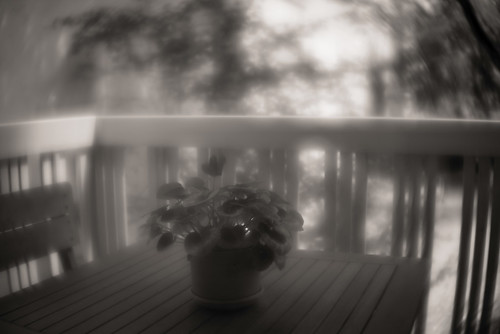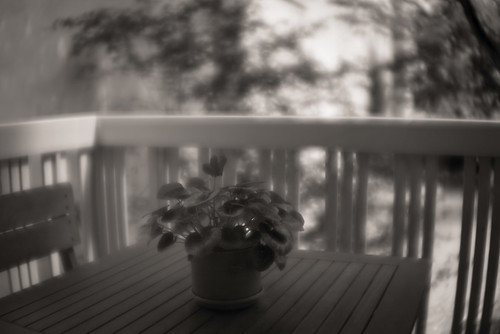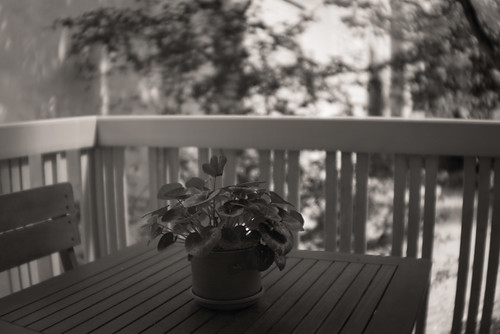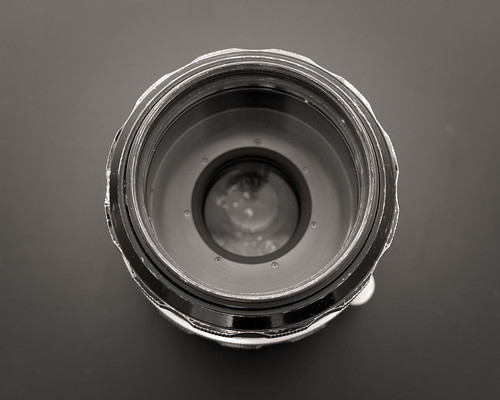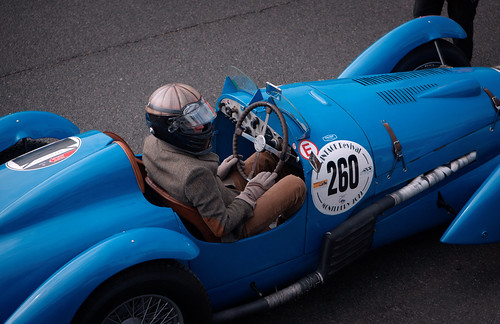Specialty "soft focus" lenses can be a real kick in the pants, but most of the time they are difficult to control.
I've owned many "soft focus" lenses.
It all started with a 12inch Portland lens that I dearly wish I'd kept. I didn't use
it much and I now very much regret selling that lens. I paid next to
nothing for it and got next to nothing selling it on.
I also owned a Wollensak Verito, but it never was mounted nor used. Stupid, stupid, silly me. What I'd give to have that lens back. Like the Portland soft focus lens, I paid next to nothing for the Verito and got very little when I sold it.
There were three other large format
soft focus lenses that passed through my toy box. Two came from Fuji
and were the 180mm and 250mm SF lenses. Like the Verito and Portland
optics I never came to grip with the Fujinon SF, even though I tried
them many times. Something simply did not "click" (ahem) for me. Same for a gorgeous Rodenstock 300mm Imagon lens that came with a complete set of sieves.
The "soft focus" lens I had the most luck with was a Mamiya 150mm SF for RB67 that came with the sieve set. I picked it up for cheap from KEH and used it on a workman-like Mamiya RZ. I photographed some of my wife's roses and peonies with it. I still have several palladium contact prints that I made from digital inter-negatives that I scanned from the original 120 6x7cm. The prints "sing" to me. The flowers "glow" so magnificently. These prints remain something quite special.
I have a Pentax 85mm f/2.2 Soft that was originally in Pentax K mount, but came to me in Nikon F mount. Talk about under-corrected spherical aberration behind the point of focus! Eowza!! that thing is over the top.
Even stopping the Pentax down it fails to sharpen up in any
meaningful way. It's simply too much for me and I'd prefer a bit more
softness control. It's probably too much for other people, too. I've had this lens forsale on a local website for months and no one appears the least bit interested. Can't say I blame them.
After trading emails with a scientist photographer who received his PhD in the topic of "pictorialist" lenses I learned something interesting. Of course, now I'd like to find the lens he says modern day "pictorialists" swear by. It's the Minolta Varisoft 85mm lens and hey cost the moon. I doubt I'll ever find one for a reasonable living on a fixed income price. Though I do keep my eyes open.
A couple years ago I picked up a box of lenses for 7Euro each. One of them was a Nikon Nikkor 50mm f/2 Ai. It was disassembled, cleaned up, and as it was being put back together, a thought occurred to me that maybe using the rear element set all by itself could be "interesting." I found I needed to put a couple extension tubes in line to get the setup to focus from infinity down to something pretty close. It did the trick. Some of the photos I made with it weren't half bad.
Since hunting and gathering is a full time obsession for me, the 50mm f/2 Nikkor was sold. In the process of moving to Nikkor 50mm f/1.4 manual focus lenses, I stumbled across a 20Euro beater Nikkor-S.C. I got the parts off it I needed for another Nikkor-S.C. project and quickly realized I had a similar setup to my old Soft Focus Special.
Using an 11mm extension tube I found the Nikkor-S.C. 50mm f/1.4 rear element set Soft Focus Special could focus from infinity to about a foot. This was a much shorter lens adaptation than the f/2 was.
Looking at how it renders I feel that it behaves rather similarly to the old Wollensak Varito. There's swirl around the edges of the frame. There's loads of barrel distortion (which I didn't find in this quantity in the converated 50mm H f2). The under-corrected spherical aberration is controllable using the aperture. To help protect the lens internals I mounted up an old UV filter. In short, not a bad "find" out of a cheap ready for the recycler lens.
How does the rear element set of a classic old manual focus double Gauss design give a soft focus rendition? Nikon's "Thousand and One Nights" history series may have the answer. When designing wide aperture SLR lenses they would "fight fire with fire" by letting under-corrected spherical aberration dominate both element sets of deeply ground element curves. The trick appears to be to balance that under-correction. The first element set gives under-correction and the second element set inverts the effect and re-corrects it back out.
With this in mind, you can use either the front or aft element set from a double Gauss lens to achieve a similar effect. In the case of my thrashed 50mm S.C. the fore element group has deep scratchs and boatloads of fungus, but the rear element set remains clear. This, it turns out, matches the configuration of the old Portland soft focus lens that I dearly miss. The aperture is in from the element(s) and controls the level of softness.
One thing I notice is the out of focus transition behind the point of focus is very very smooth from the "get-go." Where most old under-corrected 50mm lenses transition through the out of focus disk having a bright center _and_ a somewhat bright outter ring, this Nikkor SF Special transitions straight to beautiful under-corrected spherical aberration behind the point of focus. No outter ring around the out of focus disk. It's glorious.
I don't like this kind of rendering for automobiles (though things look slightly better in Black and White than they do in color) or many of the man-made subjects around town. The effect, however, looks pretty good on vegetation and in portraiture. It's a matter of finding a subject that, to one's eyes, is enhanced by the softness.




